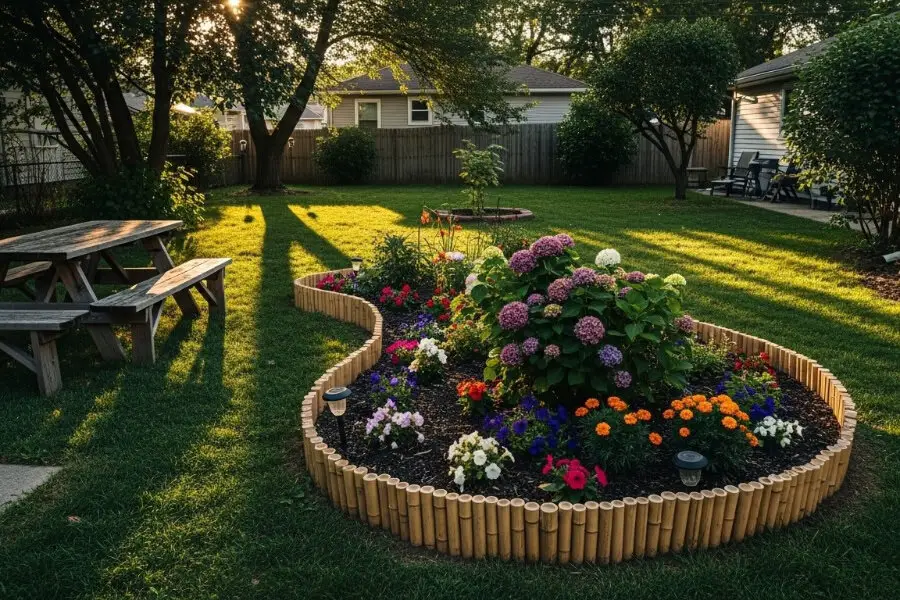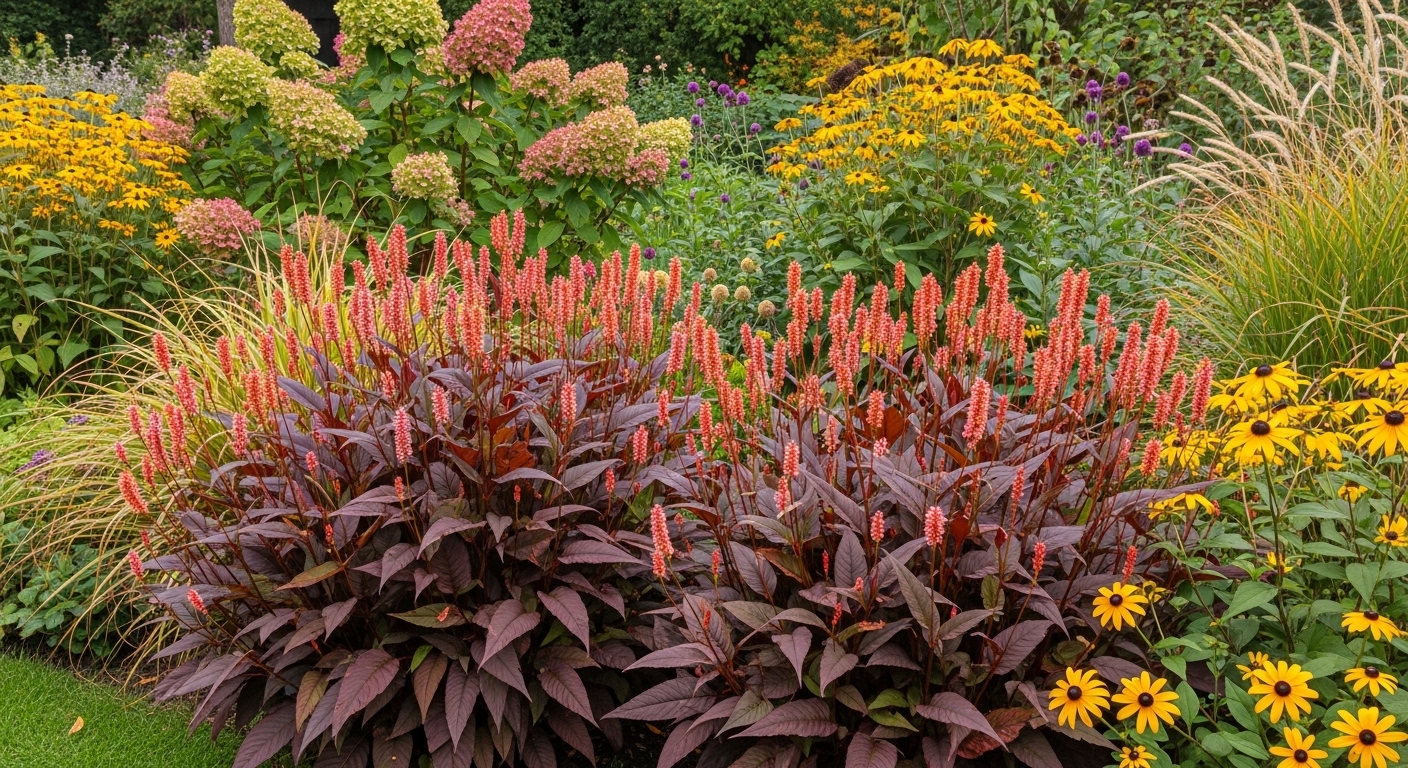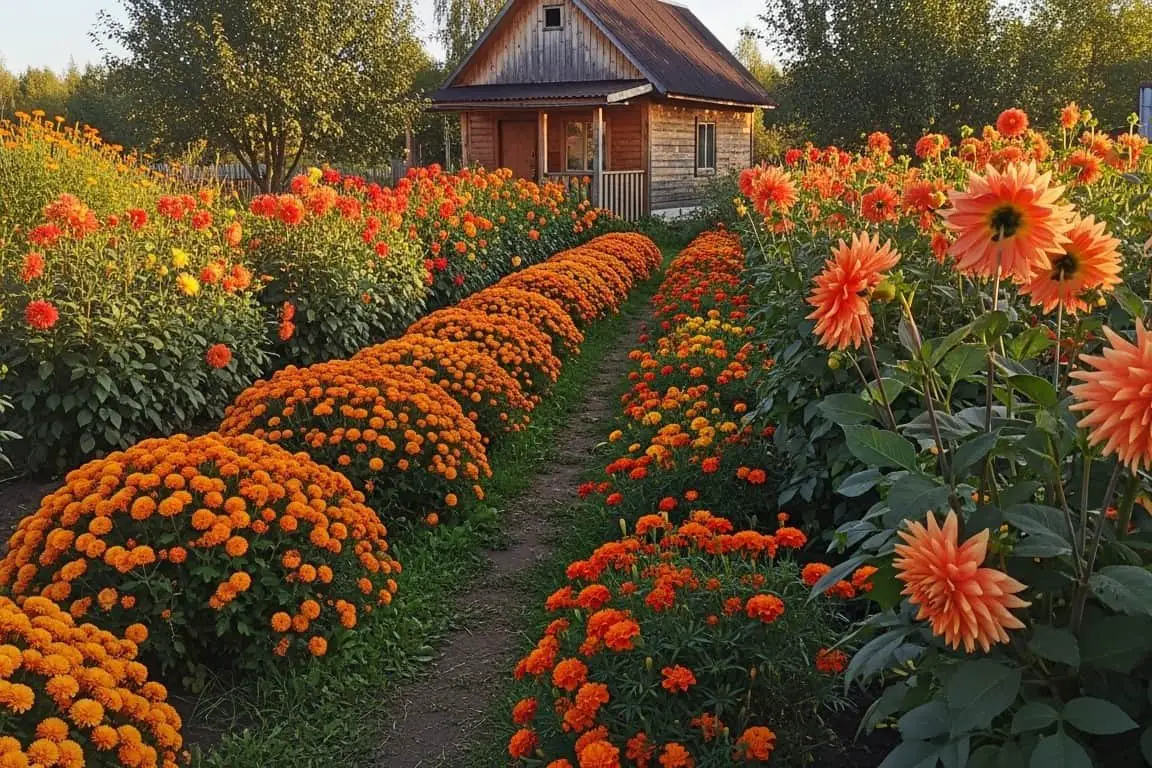Dead hydrangea flowers can make your garden look messy. Removing these spent blooms, known as deadheading, keeps the plant healthy and neat. This guide will teach readers simple steps to care for their hydrangeas properly.
Keep reading to learn how easy it is!
Contents
Understanding Deadheading
Deadheading means cutting off old flowers from plants. This simple task keeps hydrangeas healthy and blooming.
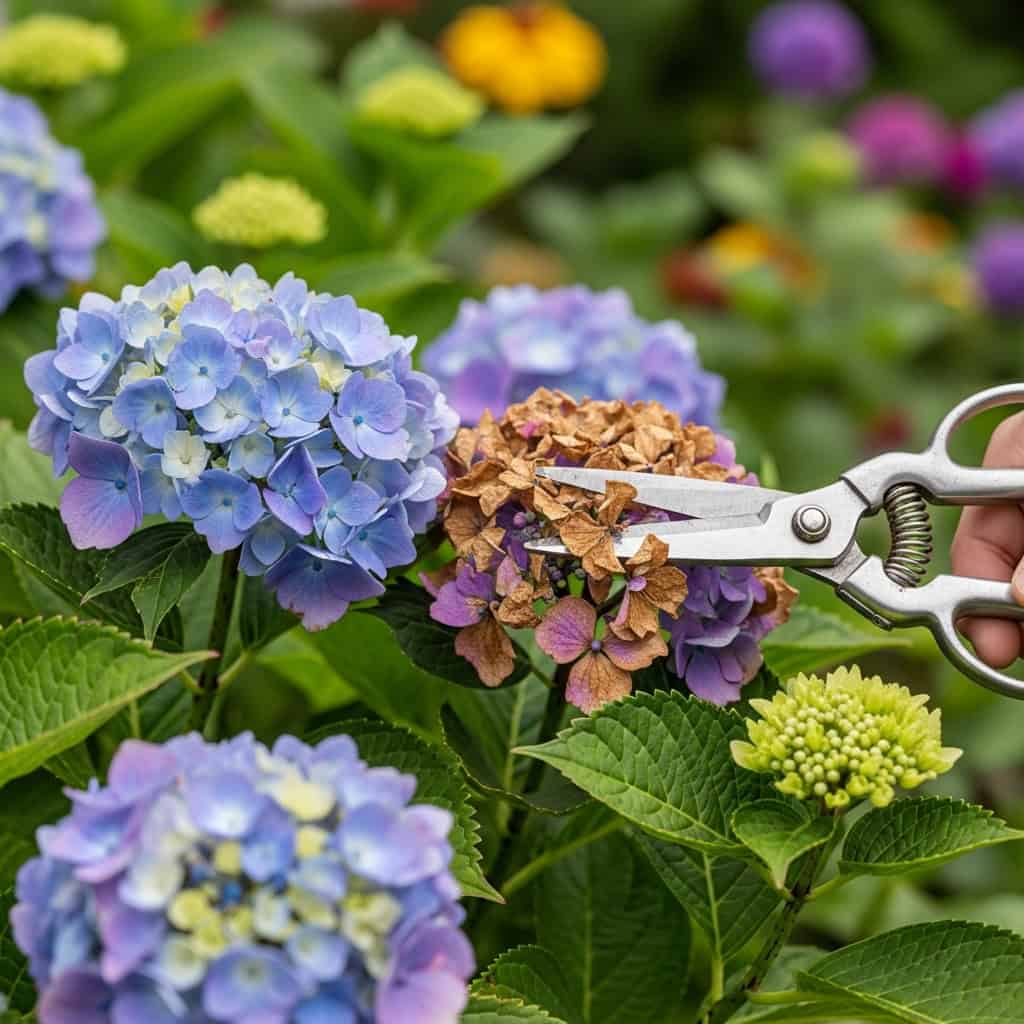
Define Deadheading
Deadheading means cutting off dead or spent flowers from plants. For hydrangeas, it involves snipping just below the dried bloom using tools like garden shears. This keeps the plant neat without heavy pruning.
This process focuses on tidying, not shaping or resizing the shrub. Only remove old blooms while leaving healthy leaves and stems intact. Deadheading is an optional step in plant care but improves hydrangea aesthetics.
Reasons to Deadhead Hydrangeas
Deadheading keeps hydrangeas looking neat and fresh. Removing spent blooms improves the shrub’s appearance and helps maintain tidiness in a garden. While not vital for plant health, it adds aesthetic value by shaping the plant naturally.
Some gardeners prefer leaving dried flowers for visual interest during late summer or fall, creating seasonal charm.
This practice can also promote cleaner maintenance without heavy pruning. Cutting away wilted flowers reduces clutter and makes bushes look more lively. It avoids altering the natural form of the shrub, keeping gardening simple yet effective.
Overdoing deadheading, however, may cause harm to healthy stems or disrupt growth patterns. Minimal pruning is often enough to achieve desired results.
Guide to Deadheading Hydrangeas
Deadheading keeps hydrangeas healthy and blooming. Learn key tips to prune correctly and at the right time.
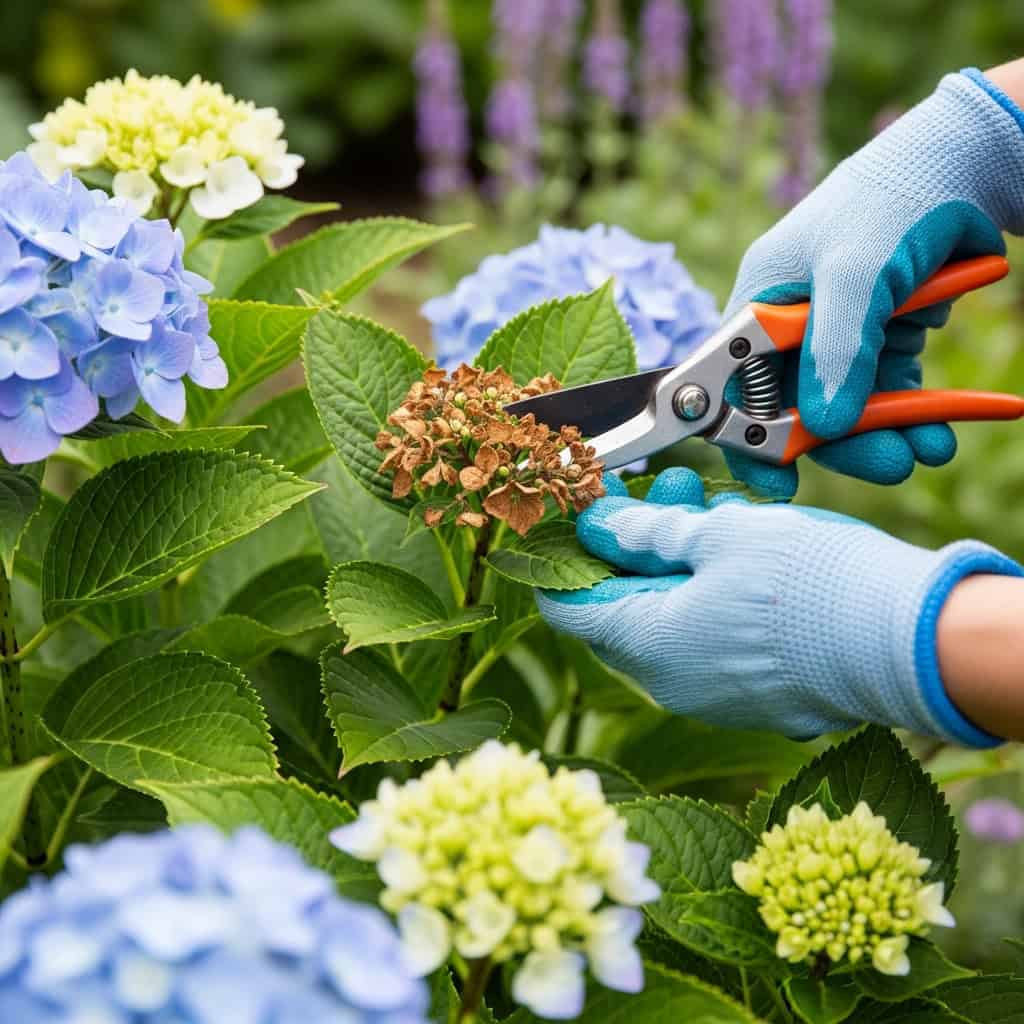
Identify the Correct Cut Location
Cut just below the spent bloom to remove it correctly. Make the cut above the first set of healthy leaves.
Take care not to damage any flower buds nearby. This ensures future blooms stay safe. Use the node below the bloom as your guide for accuracy.
Emphasize Minimal Pruning
Excessive pruning can harm hydrangeas. It may stop them from blooming the next year. Minimal deadheading is best to keep the plant’s growth cycle natural. This method keeps the shrub tidy while avoiding over-pruning.
Major pruning should not be done after late summer. Hydrangeas don’t need heavy cutting for healthy growth or flowering. Focus on removing only spent blooms and unhealthy stems to preserve their shape and health.
Best Time to Deadhead
Deadhead hydrangeas during the summer months. This helps remove spent blooms without disturbing the plant’s natural growth cycle. Stop deadheading in fall to let dried flowers remain on the shrub for visual appeal and seasonal care.
Late summer is a good time to stop if you want to enjoy dried blooms as part of your garden maintenance. Avoid over-pruning, as it can harm flowering and plant health. Timing is key for both aesthetics and proper seasonal care in gardening.
Steps to Deadhead Hydrangeas
Start by getting your tools ready and finding the faded flowers. Focus on making clean cuts to encourage healthy growth.
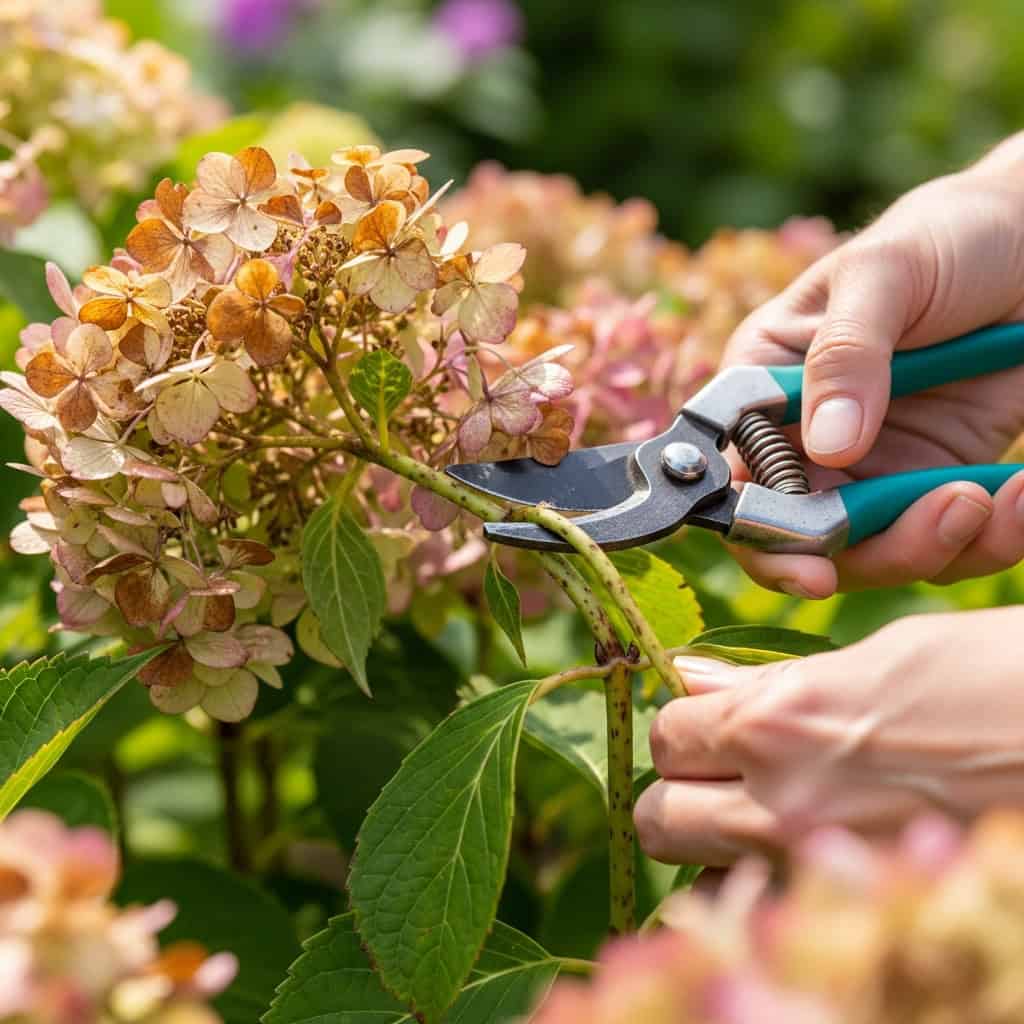
Prepare Necessary Tools
Clean, sharp shears work best for deadheading hydrangeas. They make precise cuts and prevent damage to healthy stems or buds. Gardeners should sanitize the tools before using them to stop disease from spreading.
A clean tool improves accuracy during bloom removal. It also keeps plants in good health after trimming. Observing the hydrangea beforehand helps spot spent blooms easily. Moving forward, locate where the spent bloom is on the plant.
Locate the Spent Bloom
Look for faded or dead flowers on the hydrangea. These blooms appear dull and lifeless compared to fresh, vibrant ones. Spent blooms may also show browning edges or wilted petals.
Inspect each stem carefully before cutting. Avoid removing healthy flowers by mistake. Focus only on withered or dry blossoms while keeping the rest intact for better blooming later.
Find the Node Below the Bloom
Locate the first healthy leaves below the spent flower. This spot is called the node. The node shows where to make your cut during deadheading.
Cut just above this point, leaving the node intact. This protects future buds that form at these spots. If you cut too low, it may harm next year’s blooms. Keeping nodes undamaged ensures strong growth and new flowers next season.
Execute the Cut
Make the cut just below the spent bloom. Slice above the first set of healthy leaves. Use sharp, clean tools to avoid damage. Each cut should be smooth and precise.
Avoid cutting into new growth or buds nearby. This protects future blooms. Check each cut before moving to another bloom for accuracy and plant health.
Remove Unhealthy Stems
Unhealthy stems should be removed to keep hydrangeas in good condition. These stems are often brittle or discolored, making them easy to identify. Pruning them promotes plant vitality and helps maintain the shrub’s appearance.
Care should be taken not to cut stems with buds, as they will develop into flowers later. Attention should only be given to those that are clearly dead or non-viable. Removing these weak sections enhances the health of the plant and prepares it for new growth.
Schedule Deadheading Sessions
Set a routine to remove spent hydrangea blooms during the summer months. Regular sessions prevent old flowers from accumulating and keep the shrub looking tidy. Late summer is the latest suggested time for this task.
Ceasing by fall allows the plant to prepare for dormancy naturally.
Consistency helps prevent over-pruning at once. Monitor your plants weekly or every other week, depending on their size and bloom cycle. Planning these maintenance tasks enhances blooming, foliage health, and shrub care throughout the growing season.
Benefits of Deadheading Hydrangeas
Deadheading hydrangeas keeps them healthy, encourages fresh blooms, and makes the plant look neat—read more to learn how easy it is!
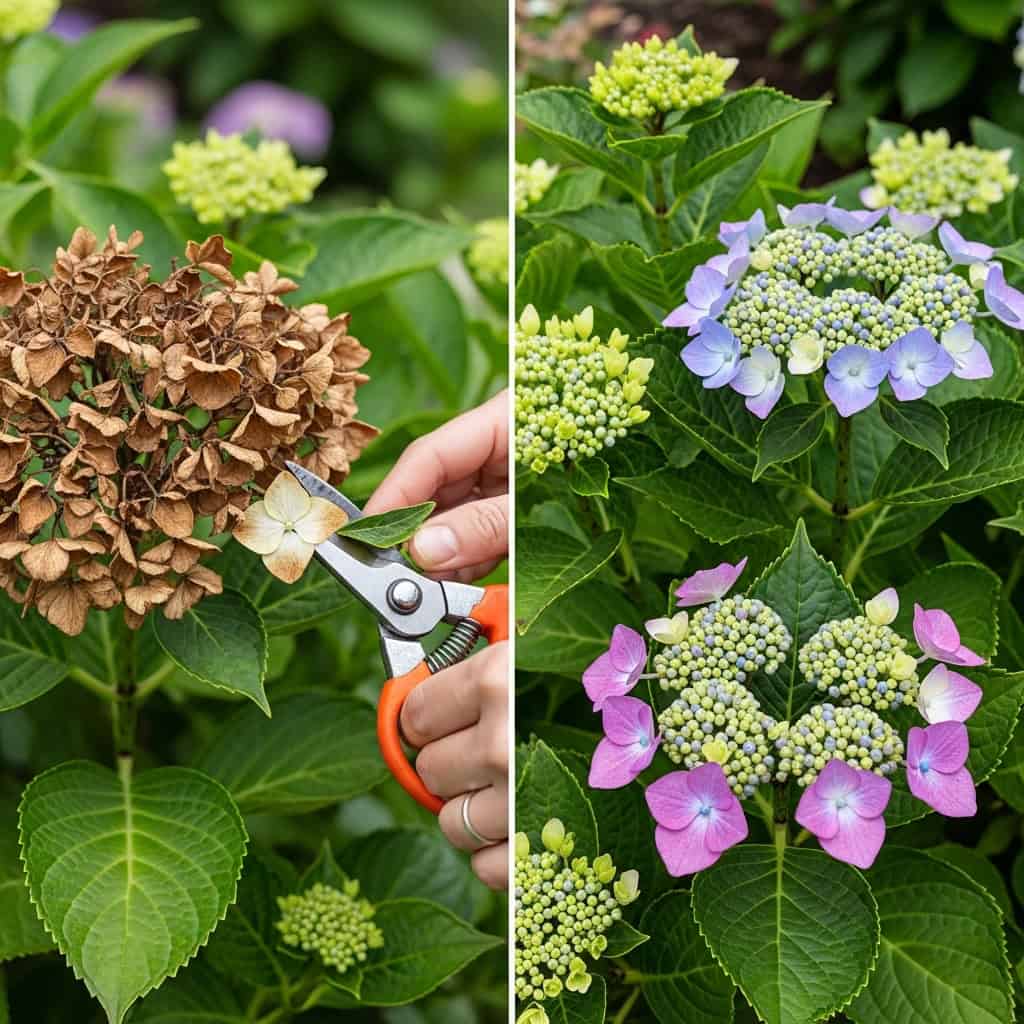
Promote New Blooms
Cutting spent blooms supports hydrangeas in producing new buds. The plant redirects energy from seed production to developing fresh flowers. This maintains an active flowering cycle.
Repeat-blooming types gain significant advantages from deadheading. Removing old flowers promotes extended floral displays throughout the season. Move on to improving overall plant health next!
Boost Plant Health
Deadheading clears dead flowers, improving air circulation. This helps prevent fungal infections and keeps the shrub healthy. It also stops pests from hiding in decaying blooms or debris.
Removing unhealthy stems strengthens the plant. Proper pruning reduces disease risks and promotes vigor. A well-maintained hydrangea grows stronger with fewer problems.
Enhance Shrub Appearance
Regular deadheading keeps hydrangeas looking neat. Removing spent blooms gives the shrub a tidy and polished look. This simple task prevents the plant from appearing messy or unkempt in your garden.
Dried flowers left late in summer can add unique texture to landscaping. Neatly trimmed shrubs also blend well with other plants, enhancing garden aesthetics. Deadheading ensures the natural shape stays intact without drastic pruning, enhancing garden beauty easily.
Conclusion
Deadheading hydrangeas helps plants stay healthy and look great. It clears away old flowers, making space for fresh blooms. With simple steps and care, gardeners can enjoy vibrant shrubs all season.
Keep tools ready and make proper cuts for the best results. Enjoy the beauty of thriving hydrangeas in your garden!
FAQs
1. What does it mean to deadhead hydrangeas?
Deadheading hydrangeas means removing old or faded flowers from the plant. This helps keep the plant healthy and encourages new blooms.
2. When should I deadhead my hydrangeas?
You should deadhead your hydrangeas during their blooming season, typically in summer or early fall. Avoid cutting too late in the year to prevent harming next year’s growth.
3. How do I properly deadhead a hydrangea?
To deadhead, use clean pruning shears and cut just above a set of healthy leaves or buds on the stem below the flower you want to remove.
4. Why is it important to deadhead hydrangeas?
Deadheading improves how your plant looks, prevents wasted energy on dying blooms, and promotes better flowering for longer periods.


